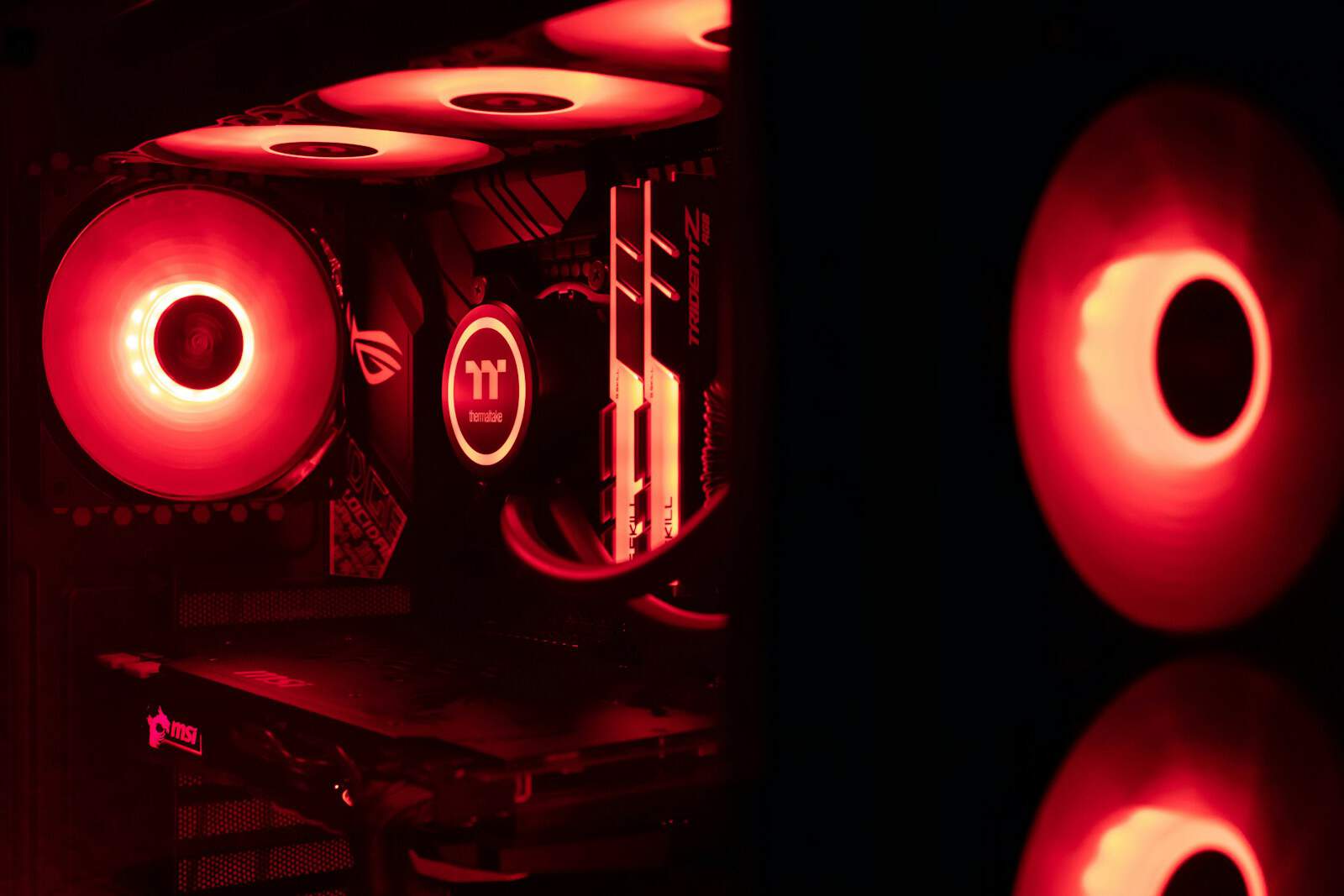Understanding PC fan direction is important for keeping your computer cool. Knowing how to identify the intake and exhaust sides of your fans can make a big difference in airflow and performance. This simple step can help prevent overheating and extend the life of your components.
PC fans typically have small arrows on their sides showing the direction of airflow and blade rotation. This helps users install them correctly. The side with the fan motor is usually the exhaust side, pushing hot air out. Proper fan placement ensures cool air comes in from the front and is expelled out the back.
Paying attention to fan direction can improve cooling in your system. By doing this, you’ll achieve better airflow and reduce the risk of dust buildup. This practice will not only keep your PC running smoothly but also safeguard its internal components from damage.
Key Takeaways
- Identify fan airflow with arrows or motor placement.
- Proper fan direction boosts cool air intake and hot air exit.
- Correct setup improves system cooling and component longevity.
Fundamentals of PC Fan Direction
PC fans are vital for maintaining optimal temperatures inside your computer. Understanding how air moves through your system and choosing the right fans can make a significant difference.
Understanding Airflow Basics
Airflow is the movement of air through a computer case. It helps to cool the components by pulling in cool air and pushing out warm air. Fans usually work in two main roles: intake and exhaust. Intake fans bring cool air into the case, while exhaust fans push warm air out.
Proper airflow keeps the system running efficiently. It also helps to avoid overheating and potential damage to the components.
Direction of Airflow in Fans
Fan blades play a crucial role in determining the direction of airflow. Most fans have arrows on their sides to indicate the direction of airflow and the way the blades spin. Typically, the side with the fan’s motor or support structure is the exhaust side, while the opposite side is the intake side.
To ensure proper cooling performance, position intake fans at the front or bottom of the case. Place exhaust fans at the back or top. This setup promotes good airflow and helps maintain a balanced system temperature.
Static Pressure vs Airflow Fans
Static pressure and airflow fans are designed for different purposes. Static pressure fans are ideal for situations where air needs to move through obstacles like radiators or dense components. They generate more focused airflow, which is useful in those scenarios.
Airflow fans, on the other hand, are better for open areas in the case where maximizing air movement is the goal. They help to create a steady stream of air through the case, aiding in overall cooling. Choosing the right type of fan based on their application can enhance cooling performance significantly. Proper fan orientation ensures optimal airflow and efficient cooling.







